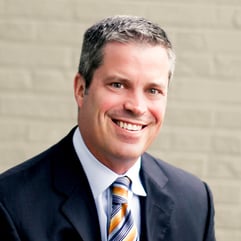Excelencia in Education, a not-for-profit advocacy group focused on accelerating Latino student success, recently released Tapping Latino Talent, a compelling research study on closing completion gaps and workforce gaps. This study, and the other excellent work they have produced since being founded in 2004, takes a data-informed look into our mandate as a country to improve educational attainment levels across the board. While they focus on student success through a Latino lens, their broader focus on the needs of ‘post-traditional students’ is a powerful starting point in the broader conversation about closing all equity gaps.
Tapping Latino Talent starts by highlighting completion data that many in our industry have seen. Only 46% of Latino students complete a degree within six years, compared to 63% of white students (similar gaps exist between black and white students). They then move on to data that should inform our strategy to close these gaps – 71% are from families earning $63,000 or less a year, and 44% are first-generation (compared to 22% for white students). For these reasons, they are more likely to carry a full work schedule while they take classes and have less of a support network to help them navigate their way to completion. Clearly, these facts point to the need to eliminate as many barriers as possible from their path to completion and the prospects of a career that provides fulfillment and social mobility.
Strategies to Close Equity Gaps
Any experienced higher education administrator knows first-hand that improving student outcomes is hard, complex work. There is good news, however. Institutions are more focused than ever on improving outcomes and closing equity gaps. Research and solutions have evolved greatly in the past few years. The pandemic has made disruption an unavoidable reality and opened the door for reimagining how we do things to an extent that we have never before seen.
How can we capitalize on these opportunities and more fully step into our industry’s mission of transforming students’ lives? Below are three pragmatic strategies.
Strategy 1: Data-informed planning
The academic enterprise at most institutions is complex and decentralized. Intentionality and data-informed planning are needed to manage faculty, curriculum, academic advising, space, and finances synergistically to improve completions and close equity gaps. This kind of planning must focus on students’ completion paths.
Completion paths are ways to complete a credential that an institution has committed to support. In other words, a student can start and finish their credential on-time with the same expectations of how courses will be offered as when they first enrolled at the institution. For example, an institution might discover that they have a sustainable cohort of students pursuing an associate's degree on campus B in the evening and commit to providing the courses needed to complete that degree on that campus in the evening.
Planning at this level changes the focus and resource allocation framework from offering courses to offering credentials, organically requiring collaboration between the various departments supporting that degree. Committing to completion paths also provides clarity for students and their advisors on how to navigate their degree while managing their complicated lives.
Strategy 2: Optimize degree velocity
Degree Velocity is a leading indicator of graduation rates. It captures productive progress of each student through their respective pathways and highlights where students are getting bottlenecked on their path to completion. Because it is a leading indicator, as opposed to more well-known lagging student success metrics like completion and retention rates, it is potentially actionable.
Measuring degree velocity for each student and comparing the early momentum and competition velocity of different student populations highlights completion bottlenecks and directs intervention. Georgia State University has received a great deal of notoriety for this approach to eliminating equity gaps. Pervasive focus on degree velocity and interventions to accelerate completion are needed if we are to eliminate gaps nation-wide. Complete College America founder Stan Jones frequently underscored this point by summarizing completion research this way: “time, not tuition, is the enemy of completion.”
Strategy 3: Align curriculum to high-demand job skills
Finally, as Tapping Latino Talent highlights, our degree pathways must evolve to meet changing needs in the workplace. This means offering credentials that align with high-demand jobs and refining course requirements to align with required skills for those jobs. While this study highlights four institutions that are responding to these needs, we have some work to do on this front. Only 1 in 3 Latino students surveyed by Excelencia strongly agreed that their alma mater provided them with the knowledge and skills needed to be successful in the workplace.
For me, perhaps the most compelling metric in the study was this: only 22% of Latinos in the workforce are employed in management, professional and related occupations (compared to 41% of Whites). Our ‘why’ at Ad Astra is that people deserve to be valued, educated, and transformed. Education promises to be the most transformative force in society, but we will only realize that potential if we aggressively seize this historic opportunity to keep that promise to all students.
Click here to access the full research study.
 About the Author:
About the Author:
Tom Shaver is the founder and CEO at Ad Astra, where he's responsible for the company's strategic vision. He's also the leading industry expert on designing better pathways for students through strategic scheduling and aligning faculty and space for more efficient resource stewardship.



